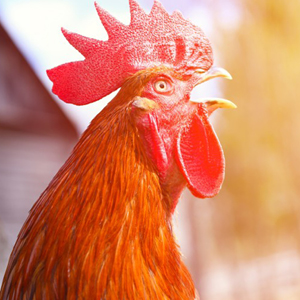What is Breathing?
Respiratory issues for those living with the late effects of polio.

spirit (n.)mid-13c., “animating or vital principle in man and animals,” from Anglo-French spirit, Old French espirit “spirit, soul” and directly from Latin spiritus “a breathing (respiration, and of the wind), breath; breath of a god”

Diaphragm may be involved if upper cervical spine affected

Accessory muscles of respiration may be weak, decreasing rib expansion and elevation, causing restrictive lung disease

Oropharynx weakness from bulbar polio may result in obstructive sleep apnea
Respiratory complications and polio
Not everyone with a history of polio will have respiratory issues. However, with the onset of the late effects of polio or even just with ageing, breathing issues may either become more apparent or develop, so it is worth considering if you think these might be affecting you. This can be the case even if you did not need support with your breathing during the original polio episode.
Polio survivors may have weak respiratory muscles and/or a restricted chest cavity which reduces how much air can be moved in and out of the lungs (ventilation). In the blood stream, this can lead to low oxygen levels and/or high levels of carbon dioxide (a waste product of breathing). If sufficiently serious, this can lead to respiratory failure; type I due to low oxygen levels, and type II due to high carbon dioxide levels, often also with low oxygen.
Weak muscles can also make it difficult to cough strongly enough to clear the lungs which can lead to chest infections or further carbon dioxide being trapped in the lungs by phlegm.
These changes can come on slowly and be hard to recognise.
A small proportion of people will have had on-going respiratory issues since the original polio. Weakness of the breathing muscles meant they continued to require breathing support through machines that supported ventilation either at night or throughout the 24h period. These people will be managed under a medical service and require regular and ongoing checks to make sure the mechanical support remains at the right level as it may need to be increased over time.
For those who have previously not been diagnosed with breathing issues, other risk factors such as smoking will also influence the likelihood of additional respiratory-related disorders. Breathing problems can also be signs of other problems such as issues with the heart; any new breathing problems should always be checked with your GP.
Common symptoms of breathing issues include:
Shortness of breath
Feeling like you can’t take a big breath
Morning headaches
During the daytime feeling very sleepy
Sleep being disturbed, possibly waking with a gasp
Bed partners reporting snoring or stopping breathing in your sleep
Signs that you’re breathing ability has become affected:
Faster breathing rate brought on by low levels of physical effort
Your stomach and chest movements become uncoordinated when you breath in and out
Your chest is not expanding well
Using other muscles such as those of the neck or needing to support your chest by pushing down through your arms to get a big breath
Potential new respiratory issues related to polio
It would be expected that long term issues with breathing become more apparent at night before any issues are noticed with breathing during the day. This is due to the reduced number of muscles working when you are asleep, as well as the position of being flat, making it more difficult to breathe. However, because the changes can occur slowly over time you may not notice breathing is becoming more difficult. Therefore, people whose breathing is challenged by their restrictive chest wall or muscular weakness may not be picked up until a crisis arises in their breathing, generally a chest infection.
In general, there are four reasons why people who had polio may have trouble breathing:

What can I do to improve my Breathing?
Practice belly breathing and pursed lip breathing for about 5–10 minutes every day
Pursed Lip breathing
- Sit up straight — good posture can help promote lung movement.
- Breathe in deeply through the nose in a slow, controlled fashion.
- Purse the lips — they should be almost touching, as when making a “kissing” face.
- Breathe out through pursed lips — ideally, the exhalation should be twice as long as the inhalation was.
Belly breathing
- Rest a hand or a lightweight object on the stomach.
- Breathe in slowly through the nose, and note how far the stomach rises.
- Breathe out through the mouth.
- Breathe in through the nose, this time trying to get the stomach to rise higher than it did with the previous breath.
- Exhale, and try to make each exhalation two or three times as long as each inhalation.
- Periodically, roll the shoulders forward and backward and move the head from side to side to ensure that the exercise is not contributing to tension in the upper body.
Interval training
- If breathlessness or shortness of breath arise while exercising, interval training may be a better alternative to steady exercise.
- Interval training involves alternating between short periods of more strenuous and less strenuous exercise. For example, a person could try walking at a very fast pace for 1 minute, then walking more slowly for 2 minutes, in a cycle.
- Similarly, a person may perform a strength training activity for 1 minute, such as bicep curls or lunges, then walk at a gentle pace for 2–3 minutes.
- Interval training gives the lungs time to recover before challenging them again.
- Any time that exercise causes shortness of breath, it is a good idea to slow down for a few minutes. It can help to practice pursed lip breathing until the breathlessness subsides.
It is a good idea to check with a doctor before trying any new exercise, even a breathing exercise. This is especially true for people with underlying health issues, such as COPD.
Breathing is disturbed when asleep (sleep apnoea and hypopnea)
Obstructive sleep apnoea (OSA) is a complete break in breathing while sleeping due to restriction of the upper airways, lasting 10 seconds or more and can occur repeatedly through the night. Hypopneas are reductions in the flow of air by at least 30% lasting 10 seconds or more. Both are characterised by being sleepy in the day, fatigue, snoring and sleep not being refreshing. For people with PPS, poor sleep quality can contribute to fatigue symptoms and it requires assessment to see if your fatigue could be partly due to sleep related breathing disturbances. One tool often used to measure this is the Epworth Sleepiness Scale.
If you share the bedroom with a partner they might see and hear that you snore and hold your breath, then gasp to start breathing again. Some changes to breathing overnight is normal but when it happens frequently enough, it causes you to partially wake up and then disturbs the quality of sleep.
OSA and hypopnea syndrome are found relatively frequently in the general population with a higher number of cases in men than women. There is some evidence it is more frequent in a LEoP population than in the general population.
It is highly linked to being overweight and having a larger neck. Any extra bulk around the neck can make this problem worse as the muscles relax during sleep and the weight of additional neck mass makes is harder to breathe. The position of the lower jaw can also impact, if it is set further back it is more likely to put pressure on the airway when relaxed. The apnoeas/hypopneas don’t happen during all of sleep but just the deepest parts of sleep known as Rapid Eye Movement sleep (REM). During REM sleep, the only muscle functioning to maintain your breathing is the diaphragm under the ribs, as the other muscles switch off during this sleep period. The muscles and other tissues of the neck become floppy and narrow the space for breathing, so obstructing breathing completely every few breaths. Therefore, any additional upper airway resistance or mass and any diaphragm weakness will have a greater effect in REM than during other periods of sleep.
In order to diagnose breathing issues at night, a sleep study or polysomnography is carried out. Usually this involves wearing a probe on a finger overnight to monitor your oxygen saturation levels and also heart rate.
If the level of disturbance to the sleep is high, treatment will be considered by the medical team. Recommendations to lose weight might be one line of treatment. A breathing machine called Continuous Positive Airway Pressure, usually shortened to CPAP, delivered via a mask over the mouth and nose might be indicated. If this is the case you would be seen in clinic to trial the machine, learn about it and get used to the mask. For people that can’t manage the CPAP, a device worn in the mouth to change the jaw position ‘a mandibular advancement device’ might be helpful.
There are some reasons why your brain might disturb your breathing at night, termed central sleep apnoea (CSA), but this is rare and no more common in those with polio compared to a population without polio.
Muscle weakness leading to problems breathing
Most people are aware that inadequate breathing (underventilation or hypoventilation) can lead to low oxygen levels. As with other neuromuscular conditions, PPS related weakness can also lead to too much carbon dioxide being retained in the lungs and high levels in the bloodstream (hypercapnia). This usually begins at night when the muscles do not work as effectively. Several of the symptoms are similar to obstructive sleep apnoea which may lead to misdiagnosis.
If your breathing muscles are becoming weaker you might notice that it is harder to breathe in some situations. This could include while lying flat, going up stairs, when asleep, after putting on weight or during a chest infection. Pregnancy is another situation when there is more stress on the breathing system. Muscle weakness can lead to respiratory failure if the impact on the breathing system is great enough. However it is relatively uncommon in those with a polio history that respiratory failure progresses to needing requiring ventilator support during the day.
How much your breathing is affected will depend on the level and pattern of muscle weakness. The weakness might happen on its own but is often in combination with the chest wall deformity described in section c) Restriction of the chest wall.
If there is any indication your muscles might be getting too weak and can’t adequately support your breathing (such as the signs and symptoms listed above), the medical team could use a number of tests to check for this. See table 1 for a list of tests that might be used to investigate respiratory issues. The tests can be used to check oxygen levels, carbon dioxide levels or muscle strength.
| Test | Oxygen level | Carbon dioxide level | Muscle strength |
| Oxygen Saturation finger probe | Yes | ||
| Capillary or arterial blood gas | Yes | Yes | Can be implied from results |
| Lung function tests | Can be implied in some cases | Can be implied in some cases | |
| Respiratory Muscle testing | Can be implied in some cases | Yes | |
| Overnight oximetry | Yes | ||
| Capnography or transcutaneous CO2 | Yes |
Treatment is again linked to the severity of the effect on your ability to adequately manage gas exchange during breathing. If it is indicated, non-invasive mechanical ventilation (NIV) delivered via a mask will assist gas exchange. Ventilation may well only be required at night time and can be a single level (CPAP) or Bi-levels of pressure (BiPAP) to support breathing depending on the type of respiratory failure you have. With BiPAP ventilators, inspiratory and expiratory pressures can be adjusted separately according to the person’s breathing needs. People with weak diaphragms may have difficulty breathing in, so may need the inspiratory pressure to be set at a higher level than the expiratory pressure, to help them take in as much air as possible without making it harder to exhale. The symptoms of hypoventilation can be improved using BiPAP ventilators. Unless you also have other lung diseases, oxygen is not normally indicated either with the machines or alone.
Restriction of the chest wall
The ribs should move freely in what is described as a bucket handle action with each breath They should open out and lift up from the trunk creating more space in the lungs. For some people, polio affected the nerves related to the muscles of the trunk. As children grew, any imbalance in muscle strength could affect the growth and shape of the bones leading to unusual spinal curves and twists known as kyphosis, scoliosis or a combination of both. The resulting altered spine shape reduces the ability for the rib cage to produce a ‘bucket handle’ action on breathing in. This, combined with any weakness, leads to restriction of the chest wall movement, i.e. a reduction in the size of deep breath. Over time, the chest wall can get very stiff and even more restricted. This means the lungs don’t open as well, the amount of air moved with each breath is reduced and there can be areas of lung that remain collapsed and never take part in gas exchange during breathing.
Again, the person may be able to breathe well enough under normal circumstances but struggle during times of increased demand, such as a chest infection or an increased load to move against such as constipation. Reduced movement and an increased load can lead to respiratory failure. As people struggle to get in big breaths, rapid shallow breathing might be seen. This can indicate type I respiratory failure. When severe this can quickly lead to exhaustion and on to type II respiratory failure. Signs of any impact on carbon dioxide in blood gases will usually trigger a trial of NIV.
Reduced ability to clear secretions
Polio is not associated with an increased production of phlegm but removal of secretions during a chest infection can be an issue if your cough strength is poor. As with breathing muscles, muscles involved in coughing may be adequate during normal circumstances but may not be strong enough when faced with the additional burden of a chest infection. An effective cough needs not only adequate volumes of air taken in (phase 1) but coordination in the throat to close the glottis (phase 2) and abdominal strength to build up the pressure against the glottis that gets released quickly as a cough (phase 3). This generates a large enough force to clear secretions to the upper airways and out of the mouth. A reduction in muscle strength in the trunk and abdomen could affect the 1st or 3rd phase while a reduction in control of the glottis could affect the 2nd phase.
An inability to clear secretions puts people at risk of chest infections and a build- up of secretions can add to any chronic areas of lung collapse and eventually impact on the ability to breathe.
If you do find you are producing phlegm and struggle to clear it, this does need assessment. Physiotherapists can do this and give advice on secretion removal techniques which might include the ‘active cycle of breathing’, a combination of breathing in, holding and sharp breaths out, gravity assisted secretion drainage, or finally huffing, a type of breath out. It will need exploring with you to make sure you can still use the prescribed technique even when you are at your most tired.
Other techniques that have been shown to be useful for some people with polio and problems clearing secretions include:
- Being taught how to breath stack (either independently using glossopharyngeal breathing or with a device called a lung volume recruitment bag) to get a bigger breath in
Manual assisted coughing (MAC) to aid expiration. It should be considered that MAC normally requires assistance from another person and can be uncomfortable as you have to apply pressure to the stomach or lower chest, timed with the cough to get the effect.
- For patients with very thick secretions, a type of medication to break secretions down, thrombolytic could be considered. However, this will need to be monitored to assess if this truly makes clearance
- The use of mechanical devices such as the mechanical insulator/exculpatory (MI:E) to assist your cough. This not only pushes air in via a face mask, to give a bigger breath, but also sucks the air out to help the secretion removal.
All of these techniques require assessment from a health professional trained in their use, usually a physiotherapist. Advice will then be given on the most effective technique for you and will need to be monitored over time.
Find out more
Resources, Links and Research Downloads
My Journey through the Basics of Post Polio Breathing Problems
Q: Personal journey by Nancy Baldwin Carter, Omaha, Nebraka. [email protected]
W: Breathing was becoming problematic – here is what she found out.
A: Essesntial reading for LEoP
